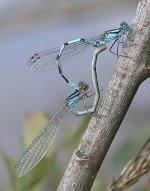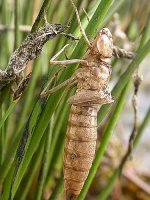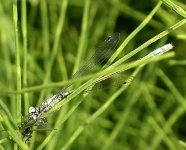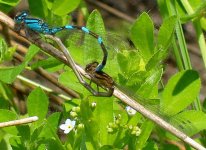Richard Ford
BF Member
Fantastic Ken, when my girlfriend and I finally sort the garden out we intend to have a pond, I hope it is as good for Odonata as yours.
I have not yet confidently identified an Azure Damselfly, any pointers to help me distinguish it from the Common blue?
For those who are interested I have just updated all the images of Odonata on my site at http://www.digitalwildlife.co.uk/dragonflies/
Here is a picture of a pair of Common Blue Damselflies i think.
I was slightly confused by the colour of the females eyes though they look Red?
Rich
I have not yet confidently identified an Azure Damselfly, any pointers to help me distinguish it from the Common blue?
For those who are interested I have just updated all the images of Odonata on my site at http://www.digitalwildlife.co.uk/dragonflies/
Here is a picture of a pair of Common Blue Damselflies i think.
I was slightly confused by the colour of the females eyes though they look Red?
Rich








